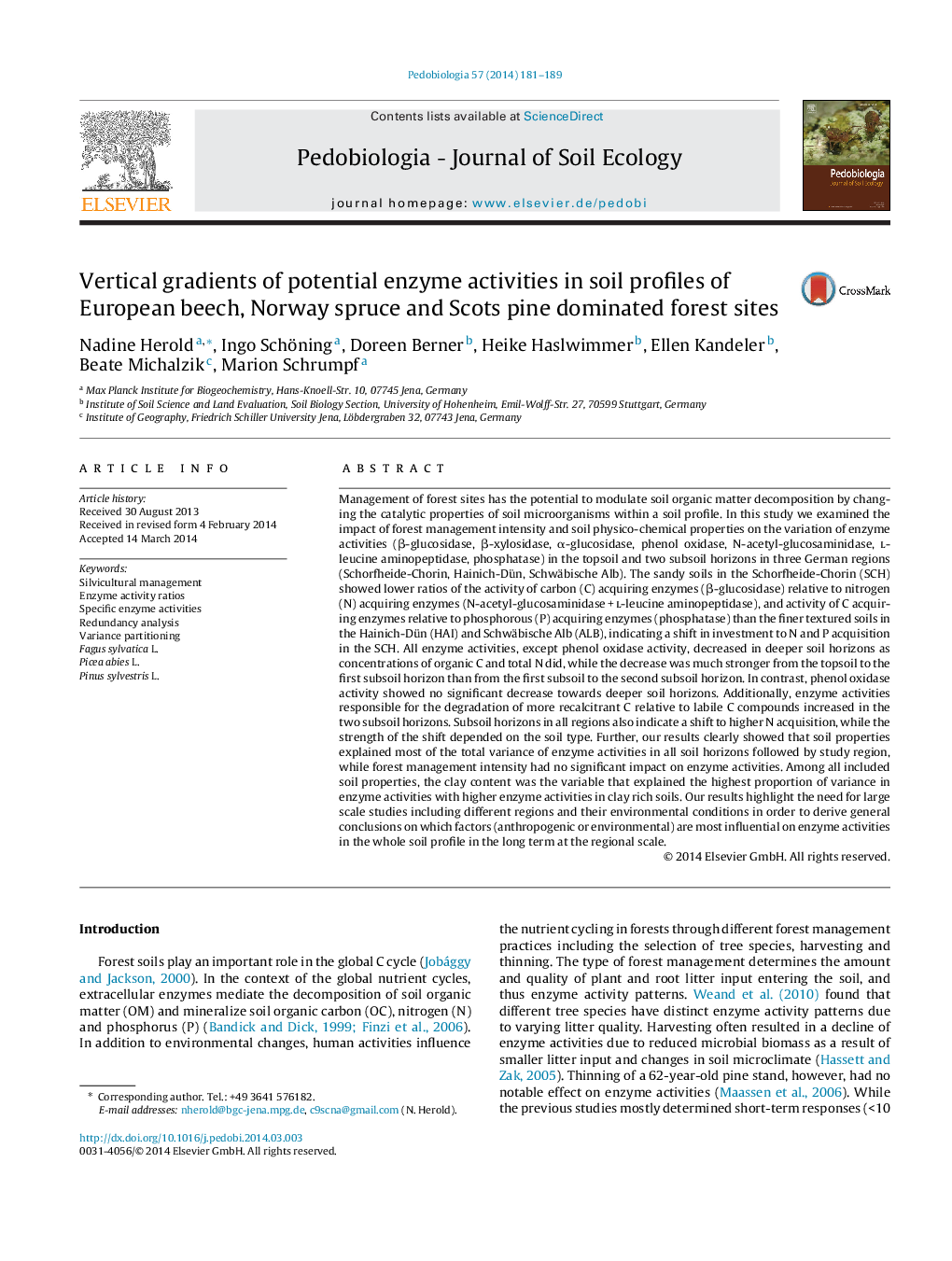| Article ID | Journal | Published Year | Pages | File Type |
|---|---|---|---|---|
| 2061063 | Pedobiologia | 2014 | 9 Pages |
Management of forest sites has the potential to modulate soil organic matter decomposition by changing the catalytic properties of soil microorganisms within a soil profile. In this study we examined the impact of forest management intensity and soil physico-chemical properties on the variation of enzyme activities (β-glucosidase, β-xylosidase, α-glucosidase, phenol oxidase, N-acetyl-glucosaminidase, l-leucine aminopeptidase, phosphatase) in the topsoil and two subsoil horizons in three German regions (Schorfheide-Chorin, Hainich-Dün, Schwäbische Alb). The sandy soils in the Schorfheide-Chorin (SCH) showed lower ratios of the activity of carbon (C) acquiring enzymes (β-glucosidase) relative to nitrogen (N) acquiring enzymes (N-acetyl-glucosaminidase + l-leucine aminopeptidase), and activity of C acquiring enzymes relative to phosphorous (P) acquiring enzymes (phosphatase) than the finer textured soils in the Hainich-Dün (HAI) and Schwäbische Alb (ALB), indicating a shift in investment to N and P acquisition in the SCH. All enzyme activities, except phenol oxidase activity, decreased in deeper soil horizons as concentrations of organic C and total N did, while the decrease was much stronger from the topsoil to the first subsoil horizon than from the first subsoil to the second subsoil horizon. In contrast, phenol oxidase activity showed no significant decrease towards deeper soil horizons. Additionally, enzyme activities responsible for the degradation of more recalcitrant C relative to labile C compounds increased in the two subsoil horizons. Subsoil horizons in all regions also indicate a shift to higher N acquisition, while the strength of the shift depended on the soil type. Further, our results clearly showed that soil properties explained most of the total variance of enzyme activities in all soil horizons followed by study region, while forest management intensity had no significant impact on enzyme activities. Among all included soil properties, the clay content was the variable that explained the highest proportion of variance in enzyme activities with higher enzyme activities in clay rich soils. Our results highlight the need for large scale studies including different regions and their environmental conditions in order to derive general conclusions on which factors (anthropogenic or environmental) are most influential on enzyme activities in the whole soil profile in the long term at the regional scale.
